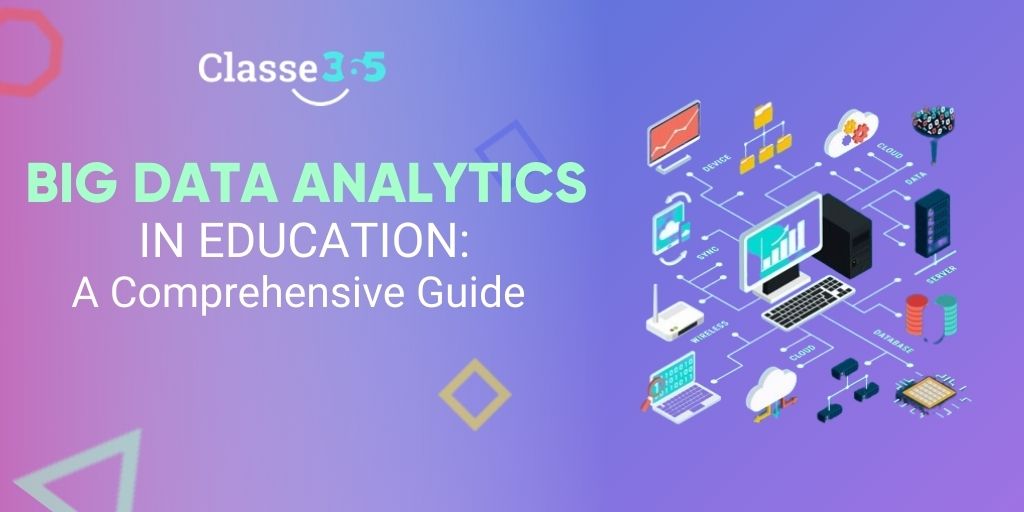Data doesn’t lie.
We, in Classe365, strongly believe in this. There has always been a debate on how old or how new concepts like data analytics, data sciences, and big data are. Well, let’s not get into that. Rather, let’s focus on how data has become an inseparable part of everyday life, let alone industries and businesses. Every success story, these days, has a strong data-backed approach. Take sports teams for example. Almost every successful team pays a huge emphasis on data. Data analysts play a major role in improving the performance levels of top players.
Now let’s move on to education, which is the topic for this article. How important is data analytics in education? Is it just a fancy term that’s being thrown around to sound modern? We can take a look into this by starting with a discussion of the other famous catchphrase that’s widely discussed. Which is,
Data doesn’t give you the full picture.
This is both true and false. It is true in the sense that data can sometimes be misleading. But on the other hand, we have to also take into account that when data is cleansed and analyzed properly, it does give a very good picture of anything.
Shifting our focus back to education, based on our research and observations, we found that big data analytics is still being used by only very few institutions. And it might be because they are not aware of how embracing data can help them better the overall performance of every student of theirs in ways they had not known before. Not just this, they could improve the quality of teachers. Earlier, I had given the sports example because like in sports, data can help better the performance of every individual. And there’s one very underrated importance of data analytics in education: data can help maintain the safety within an educational campus and also aid in supporting their mental and physical well-being.
Data analytics in education is quite a big topic to discuss. So we’re planning to do this article in two parts.
1. The first is a brief overview of real-time data analytics and on how it can be used to improve the quality of education. Real-time data is nothing but the information that is collected and is immediately disseminated for analysis.
2. The second part – which we’ll publish in a fortnight – will delve deep into real-time big data analytics, a guide on how it can be implemented in an educational institution with examples and various tools that are available. We will also touch upon how in Classe365 we pay a huge emphasis on data and what is the way forward in the future.
So, let’s look at two broad ways in which real-time big data analytics can help educational institutions
1. Improve the performance of students by providing them more personalized training
Big data and personalization always go hand-in-hand.
By constantly monitoring the data of every student and his/ her performance in academics or a particular activity, institutions can easily understand the “pattern”. This pattern can be effectively studied and students could be provided a more personalized training.
Now, we’ll look at how data analytics can help students in improving their performance. Data analytics has four major stages: descriptive analytics, diagnostic analytics, predictive analytics and prescriptive analytics. Let’s take a case of a student who is struggling with a particular subject. With the help of data analytics, the first two stages (descriptive and diagnostic) of ‘what happened’ and ‘why it happened’ can be easily established. When we move to the last two stages — prescriptive and predictive — they give us information about what the student’s future performances in the subject might be and what can be done to improve that. While prescriptive and predictive analytics might be slightly complicated, if a particular institution has real-time data dashboards, both the steps get easier and quicker.
(Did you know? Classe365 helps institutions to comprehensively track health, behavioral and academic analytics of students?)
2. It helps improve the safety of students within campus and their physical and mental wellbeing
This is an often-overlooked application of data analytics in education. First, let’s talk about safety. Again, for this, having a real-time data dashboard can come in very handy. Through this, institutions can regularly monitor real-time student population within the campus. Especially during times like this, they can use it to see if there is a possibility of overcrowding, and if social distancing might be affected due to this. In any instance, if the security protocol looks likely to be affected, then messages can be sent to students/ parents regarding the same.
Behavioral analytics is another booming field and this is something that will help educational institutions track the physical and mental well-being of students. Physical well-being might be easily tracked with the help of student records and students with existing issues can be carefully monitored. Now, when it comes to mental health, it’s slightly more complex. For this, institutions can use questionnaires and get student responses. Once they have all the results, they can act accordingly and help the students who are struggling with certain difficulties/ issues.
Let’s look at the rest of the applications and delve more into the implementation ways in the next part.
